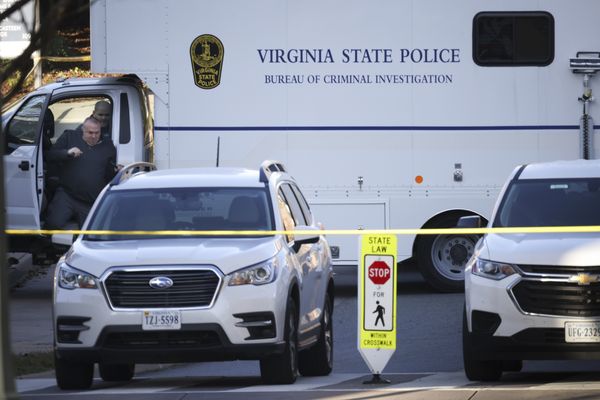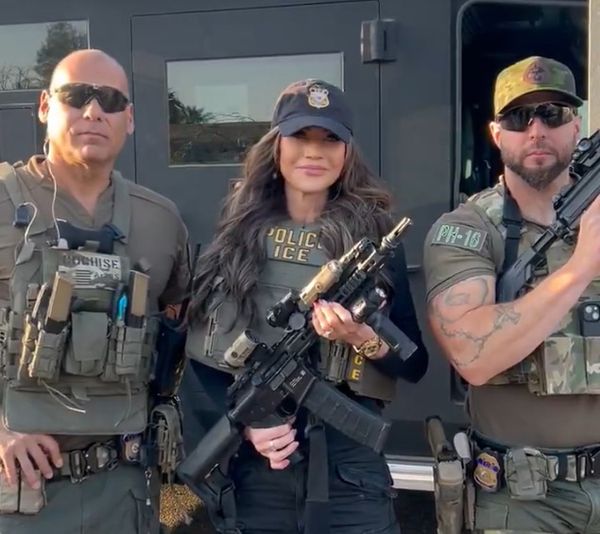The death toll has risen to 80 as a result of the wildfires that decimated parts of the island of Maui this past week, officials in Hawaii said Friday.
The number of confirmed fatalities in the 9 p.m. announcement by the County of Maui increased from the previous figure of 67.
Gov. Josh Green had previously warned the death toll would likely rise as search and rescue operations continue. Authorities set a curfew from 10 p.m. until 6 a.m. Saturday.
"The recovery's going to be extraordinarily complicated, but we do want people to get back to their homes and just do what they can to assess safely, because it's pretty dangerous," Mr Green told Hawaii News Now.
Cadaver-sniffing dogs were deployed to search for the dead, Maui County Mayor Richard Bissen Jr. said.
Blackened hulks of burned-out cars, the pavement streaked with melted and then rehardened chrome. Block after block of flattened homes and businesses.
Incinerated telephone poles and elevator shafts rising from ashy lots where apartment buildings once stood. A truck bed full of glass bottles, warped into surreal shapes by the furious heat.
Anthony Garcia assessed the devastation as he stood under Lahaina's iconic banyan tree, now charred, and swept twisted branches into neat piles next to another heap filled with dead animals: cats, roosters and other birds killed by the smoke and flames. Somehow it made sense in a world turned upside-down.
"If I don't do something, I'll go nuts," said Mr Garcia, who lost everything he owned. "I'm losing my faith in God."
Mr Garcia and other residents were faced with widespread destruction as they took stock of their shattered homes and lives Friday resulting from the wildfires that tore through parts of Maui this week and were still short of full containment.
A new fire Friday evening triggered the evacuation of Kaanapali in West Maui, a community northeast of the area that burned earlier, the Maui Police Department announced on social media.
The fire, which was completely extinguished before 8:30 p.m., occurred in an area where a county fueling station was set up to distribute about 3,000 gallons (11,356 liters) of gasoline and 500 gallons (1,892 liters) of diesel fuel for about 400 waiting vehicles. Fuel would not be distributed on Saturday, the county said in a statement.
Attorney General Anne Lopez announced plans to conduct a comprehensive review of decision-making and standing policies impacting the response to the deadly wildfires.
"My Department is committed to understanding the decisions that were made before and during the wildfires and to sharing with the public the results of this review," she said in a statement.
The wildfires are the state's deadliest natural disaster in decades, surpassing a 1960 tsunami that killed 61 people.
An even deadlier tsunami in 1946, which killed more than 150 on the Big Island, prompted development of a territory-wide emergency system with sirens that are tested monthly.
Many fire survivors said they didn't hear any sirens or receive a warning giving them enough time to prepare, realizing they were in danger only when they saw flames or heard explosions.
"There was no warning," said Lynn Robinson, who lost her home.
Hawaii emergency management records do no indicate warning sirens sounded before people had to run for their lives. Officials sent alerts to mobile phones, televisions and radio stations, but widespread power and cellular outages may have limited their reach.
Fueled by a dry summer and strong winds from a passing hurricane, at least three wildfires erupted on Maui, racing through parched brush covering the island.
The most serious blaze swept into Lahaina on Tuesday and left a grid of gray rubble wedged between the blue ocean and lush green slopes.
"It hit so quick, it was incredible," Kyle Scharnhorst said as he surveyed his damaged apartment complex.







